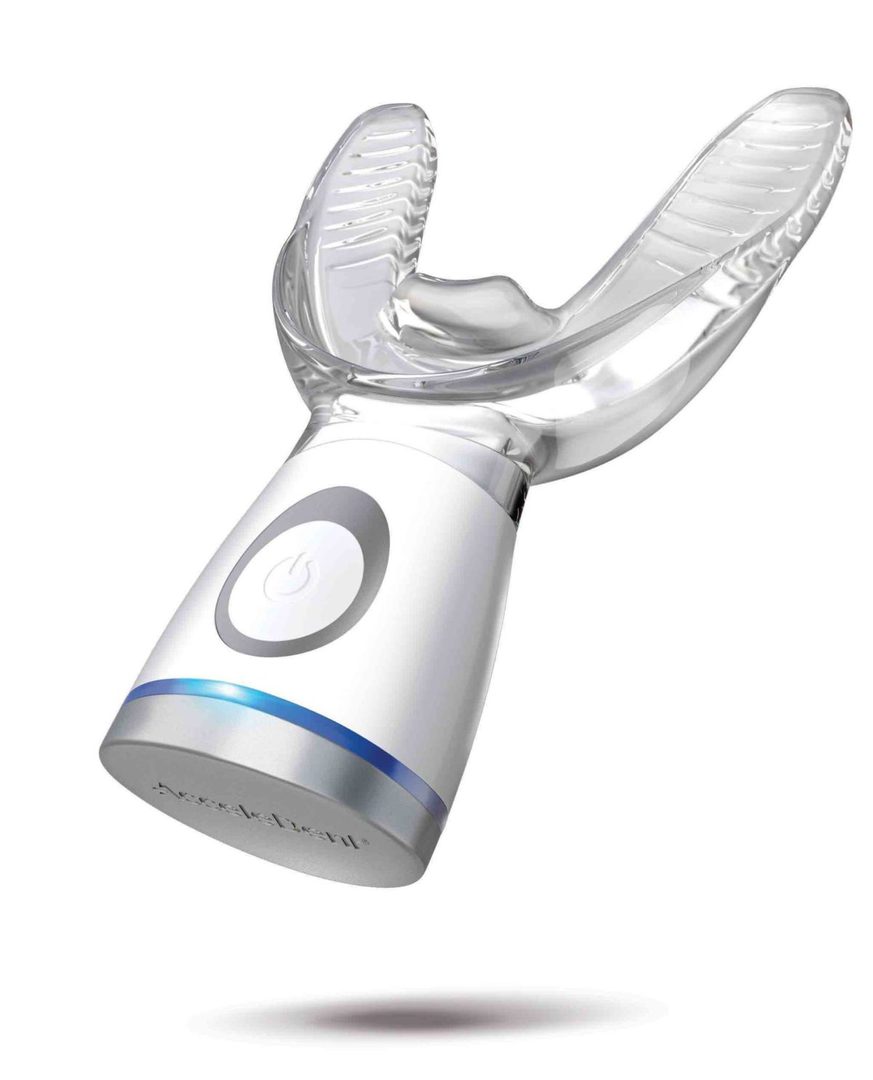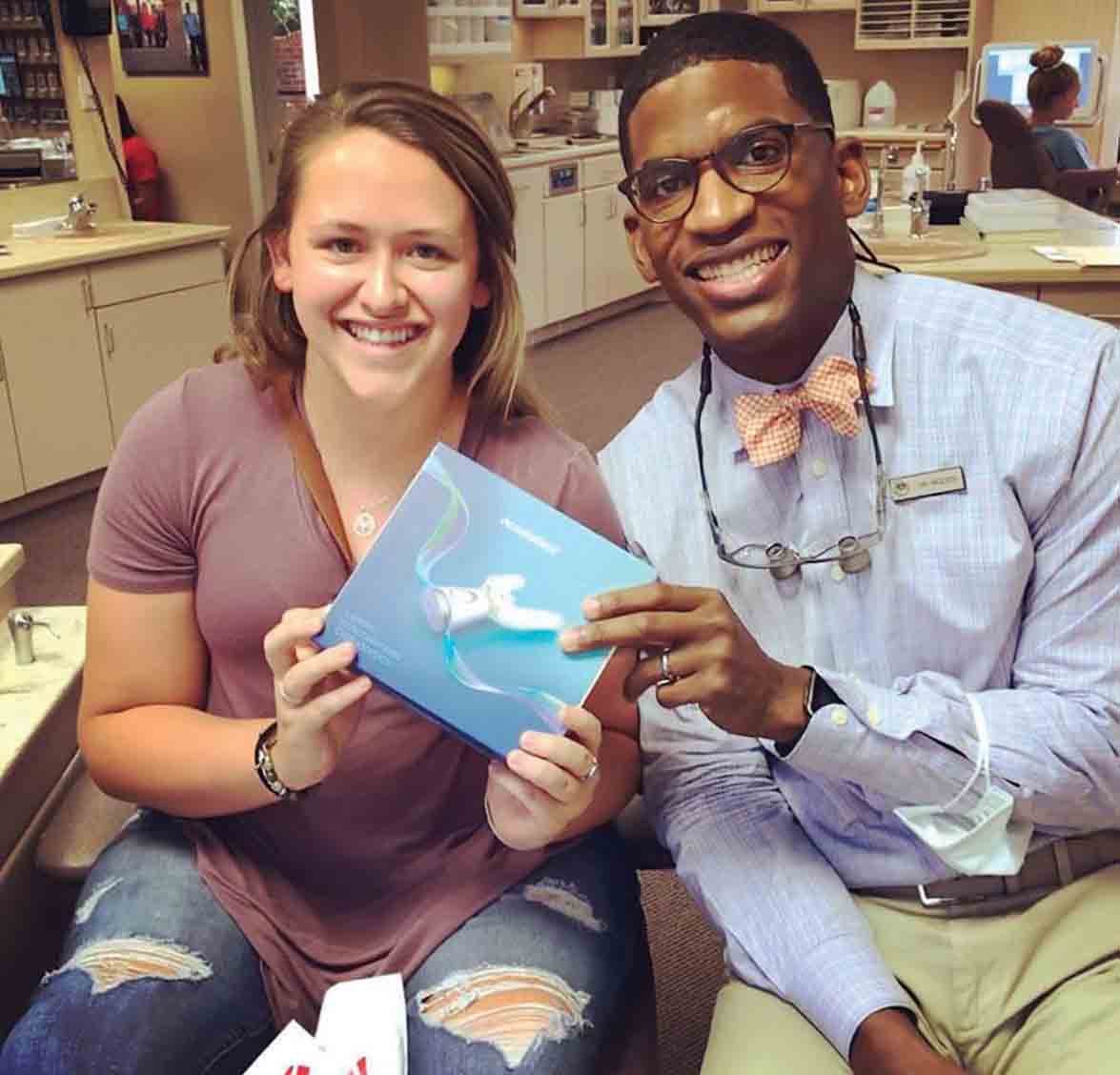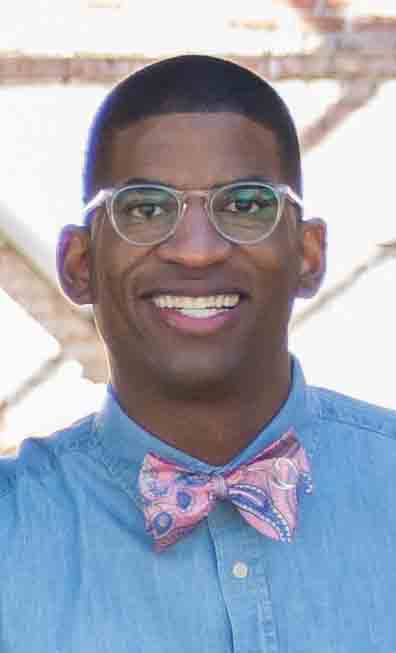Editor’s Intro: Walk patients through the steps of Acceledent’s low pulsatile forces.
Dr. Michael Woods discusses motivating patients about the benefits of low pulsatile forces
 My first experience with AcceleDent® was not as a clinician, but actually as a patient. While working as an associate for my mentor, Dr. Amy James (Haddonfield, New Jersey), I decided to treat myself with clear aligners. After the first year of treatment, it was evident a refinement was needed to achieve the results I desired. Unfortunately, I had completely lost my motivation to continue treatment. Prompted by Dr. James, I decided to give the technology a try. I was immediately blown away by the reduction in discomfort that I had previously experienced during my aligner treatment, despite the fact that I was changing trays faster. As a clinician, I draw from my personal experience when talking to patients about the benefits of AcceleDent as I find it is helpful in exploring their treatment options. Here’s my approach:
My first experience with AcceleDent® was not as a clinician, but actually as a patient. While working as an associate for my mentor, Dr. Amy James (Haddonfield, New Jersey), I decided to treat myself with clear aligners. After the first year of treatment, it was evident a refinement was needed to achieve the results I desired. Unfortunately, I had completely lost my motivation to continue treatment. Prompted by Dr. James, I decided to give the technology a try. I was immediately blown away by the reduction in discomfort that I had previously experienced during my aligner treatment, despite the fact that I was changing trays faster. As a clinician, I draw from my personal experience when talking to patients about the benefits of AcceleDent as I find it is helpful in exploring their treatment options. Here’s my approach:
1. First, ask patients if they have a concern about discomfort, and then ask about treatment time.
We generally offer AcceleDent to our adult patients who have an expressed concern about discomfort and treatment time, especially when we are attempting difficult movements (torque, space closure, crossbite correction, open bite, and deep bite correction). I specifically ask them if they have any concerns about experiencing pain during treatment or if they are looking to complete treatment prior to a specific time deadline or milestone. Many of our adults have had prior orthodontic treatment that has relapsed. These patients vividly remember their previous orthodontic experience and are less than eager to relive a similar experience. If time and discomfort are important factors to them, I tell them that AcceleDent has been clinically shown to speed up orthodontic tooth movement by as much as 50% and reduce discomfort by up to 71% in some cases, not all.
2. Explain to patients how teeth move, and show them their X-rays.
When talking to my patients about AcceleDent, I think it’s valuable to educate them about tooth movement. I review their panoramic X-ray with a specific emphasis on the ratio of crown and root length. I explain that we’re actually remodeling bone around those roots in order to shift the teeth into their desired positions. When patients observe the difference in root length relative to crown height, they seem to appreciate the importance of bone remodeling in the tooth movement process. Similar to a tree or an iceberg, teeth are supported by a much larger structure below the surface. Therefore, it’s what we don’t see below the surface that provides the stability and the support for what we do see above the surface. I use these analogies to explain why the rate of tooth movement is dependent upon the rate of bone remodeling around the roots of teeth. The technology behind AcceleDent aims to enhance the remodeling process at the cellular level by employing low pulsatile forces. This technology is not new; moreover, it was borrowed from our medical colleagues in orthopedics who discovered the benefit of low pulsatile forces in enhancing the rate of bone remodeling during the repair of fractured bones.
3. Discuss the difficulty of the case.
Clinically, my experience has demonstrated that AcceleDent makes difficult tooth movements more predictable and efficient, especially during clear aligner therapy. I have observed a clinical benefit to having patients use AcceleDent when treating open bites, closing an extraction space (lower incisor extraction), jumping a crossbite (anterior and posterior), and rotating teeth.
I find it helpful to discuss my clinical limitations, especially with adults, so they are not surprised when more difficult tooth movements take more time to accomplish or complete. AcceleDent provides a meaningful alternative to accomplish some of these difficult movements, while reducing the pain and discomfort commonly associated with these movements.
Since some difficult movements can be unpredictable in clear aligners, I offer AcceleDent as a tool to efficiently treat patients and accomplish movements that typically slow down their treatment.

4. Ask if patients prefer braces or aligners.
We offer AcceleDent to our braces and aligner patients. For patients who choose aligners, I let them know that instead of changing their aligners every 2 weeks or every week, with AcceleDent they can change their aligners every 5 days. I see these patients about every 10 to 12 weeks, and at each appointment, I’m impressed by how closely the teeth track and mirror the ClinCheck®. Another benefit that the clear aligner patients appreciate with AcceleDent is the reduction in refinements, which gives them a sense of confidence in the estimated treatment time we estimate.
For braces patients who use AcceleDent, they’re coming in for appointments every 8 weeks, and I’m noticing that the leveling and alignment are accomplished more efficiently. I’m using fewer archwires in my patients using AcceleDent as I find that I am getting much more movement out of each archwire.
The common finding among my patients using the AcceleDent technology is the reduction in discomfort during the more difficult stages of treatment in both braces and clear aligners.
5. Explain costs.
We do not use AcceleDent as a significant profit generator in our office, which makes it easier for patients to justify making the investment. Instead, we use it as a way to streamline clinical efficiencies and create satisfied patients. We essentially pass the cost of the device directly through to the patient. Even though we’re speeding up treatment, we still allow patients to stick to their payment plans. In the event patients complete treatment ahead of schedule, we have adopted a practice of extending their payments beyond their active treatment time, and we have the patients sign a new contract acknowledging their commitment to pay the remaining balance.
Conclusion
AcceleDent is one of the many technologies and appliances that help orthodontists operate more effectively and efficiently. Like most doctors, I was very skeptical, but what I learned during my firsthand experience with AcceleDent is that you can’t rely solely on what’s presented in the academic journals or product marketing. Instead, formulate your own opinion by trying AcceleDent yourself or having a staff member use it. You really need to see how it works in your hands by using it in its intended context and clinical setting to make an informed decision about its clinical efficacy.
Learn more about low pulsatile forces!
Stay Relevant With Orthodontic Practice US
Join our email list for CE courses and webinars, articles and mores

 Michael Woods, DMD, MS, is a board-certified orthodontist and is the owner of Simply Southern Smiles in Statesville, North Carolina. A graduate of Morehouse College, Dr. Woods earned his dental degree from the University of Connecticut School of Dental Medicine. Following dental school, he completed a 3-year orthodontics residency at the University of California Los Angeles (UCLA). Dr. Woods worked as a research fellow at the National Institutes of Health in Bethesda, Maryland, prior to beginning his orthodontic career.
Michael Woods, DMD, MS, is a board-certified orthodontist and is the owner of Simply Southern Smiles in Statesville, North Carolina. A graduate of Morehouse College, Dr. Woods earned his dental degree from the University of Connecticut School of Dental Medicine. Following dental school, he completed a 3-year orthodontics residency at the University of California Los Angeles (UCLA). Dr. Woods worked as a research fellow at the National Institutes of Health in Bethesda, Maryland, prior to beginning his orthodontic career.
